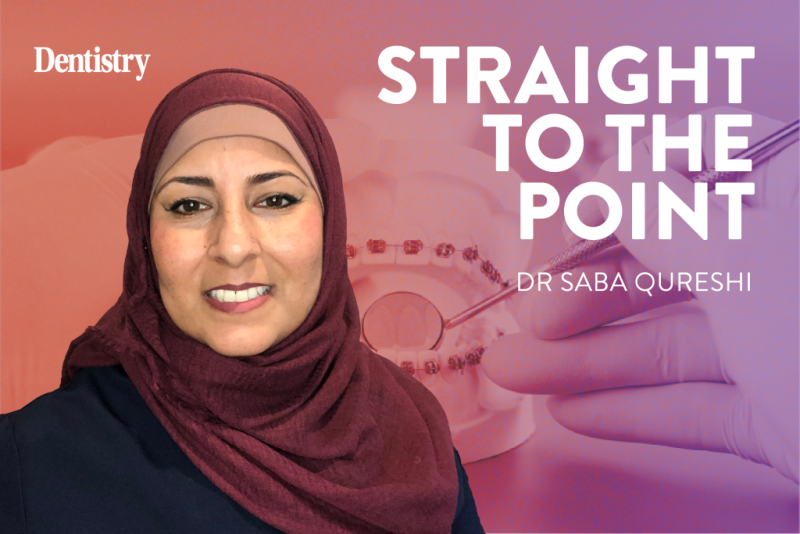The future of orthodontic care

Saba Qureshi dives into the future of orthodontic care, including how the roles of orthodontists and orthodontic therapists are likely to evolve.
In the evolving landscape of dental care, the roles and responsibilities of orthodontists and orthodontic therapists have become subjects of debate and speculation.
As advancements in technology and changes in healthcare delivery reshape the field, questions arise regarding the future balance between these two professions. Will orthodontists be replaced by orthodontic therapists, or is there a symbiotic relationship that ensures both professions thrive?
This article explores the pros and cons of each role, examining their unique contributions to orthodontic care and envisioning potential scenarios for the future.
Orthodontists: the specialists
Orthodontists are dental specialists who undergo extensive training beyond dental school, typically completing a residency program focused on orthodontics. Their expertise lies in diagnosing, preventing and correcting dental and facial irregularities using braces, aligners and other appliances.
Orthodontists possess advanced knowledge of craniofacial anatomy, biomechanics, and treatment planning, allowing them to address complex cases and provide specialised care tailored to individual patient needs.
One of the primary advantages of orthodontists is their comprehensive education and training. They are equipped to handle a wide range of orthodontic issues, from routine teeth alignment to more challenging cases involving skeletal discrepancies.
This expertise instills confidence in patients seeking specialised orthodontic treatment, knowing they are under the care of a highly trained professional capable of delivering optimal outcomes.
Furthermore, orthodontists play a crucial role in interdisciplinary collaborations within the dental and medical fields. They often work closely with oral surgeons, periodontists and other specialists to coordinate comprehensive treatment plans for patients requiring multidisciplinary care.
This collaborative approach ensures that all aspects of a patient’s oral health are addressed comprehensively and effectively.
However, the path to becoming an orthodontist is lengthy and rigorous, requiring significant time commitment and financial investment in education and training. This can contribute to higher costs of orthodontic care, limiting accessibility for some patients.
Additionally, the demand for orthodontic services may outpace the number of practicing orthodontists, potentially leading to longer wait times for appointments and treatment.
Orthodontic therapists: bridging the gap
Orthodontic therapists are dental professionals who perform certain orthodontic procedures under the supervision of an orthodontist. Their role is to assist in the delivery of orthodontic treatment, including fitting and adjusting braces, taking impressions and providing patient education on oral hygiene and appliance care.
Orthodontic therapists undergo specialised training and certification, which varies by jurisdiction, to ensure competency in their assigned tasks.
One of the primary advantages of orthodontic therapists is their ability to increase access to orthodontic care. By delegating certain tasks to therapists, orthodontists can focus on more complex cases and expand their patient base. This delegation helps streamline workflow in orthodontic practices, potentially reducing treatment costs and improving efficiency.
Orthodontic therapists also play a vital role in patient education and support throughout the treatment process. They often develop close relationships with patients, providing guidance on oral hygiene practices and addressing concerns or questions that arise during treatment. This personalised approach can enhance patient satisfaction and compliance, contributing to overall treatment success.
However, the scope of practice for orthodontic therapists is typically more limited compared to orthodontists. They must work under the direct supervision and guidance of a licensed orthodontist, which can restrict their autonomy in decision-making and treatment planning.
This dependency on supervision ensures patient safety and quality of care, but may limit the extent to which therapists can independently manage complex cases or emergencies.
The future landscape
Looking ahead, the future of orthodontic care is likely to involve a synergistic relationship between orthodontists and orthodontic therapists. Orthodontists will continue to serve as the primary providers of specialised orthodontic treatment, offering expertise in complex cases and overseeing treatment plans that require advanced knowledge and skills.
Meanwhile, orthodontic therapists will play an increasingly important role in supporting orthodontists, enhancing practice efficiency, and expanding access to basic orthodontic services.
Technological advancements, such as digital scanning and virtual treatment planning, are expected to further shape the landscape of orthodontic care. These innovations can streamline workflows, improve treatment outcomes and empower both orthodontists and therapists to deliver more personalised and efficient care to patients.
In conclusion, while the roles of orthodontists and orthodontic therapists may evolve in response to changing healthcare trends and technological advancements, both professions are integral to the delivery of comprehensive orthodontic care.
By leveraging their respective strengths and collaborating effectively, orthodontists and orthodontic therapists can ensure that patients receive the highest quality treatment tailored to their individual needs and preferences.
This collaborative approach not only enhances patient outcomes but also promotes innovation and sustainability within the field of orthodontics, securing its place as a vital component of dental healthcare now and in the future.
Catch up on previous Straight to the Point columns:
Follow Dentistry.co.uk on Instagram to keep up with all the latest dental news and trends.







